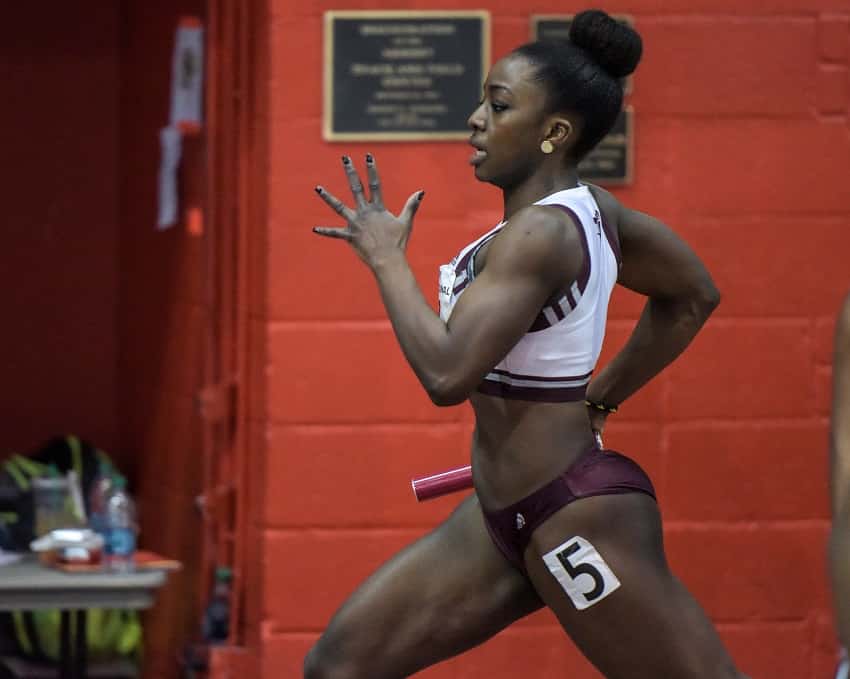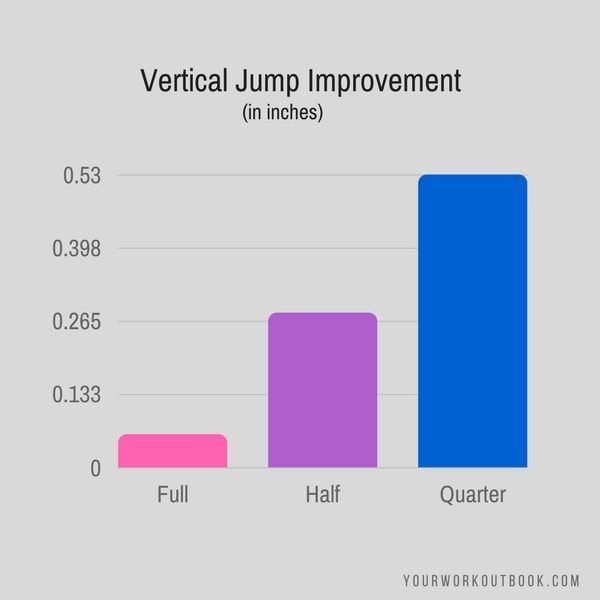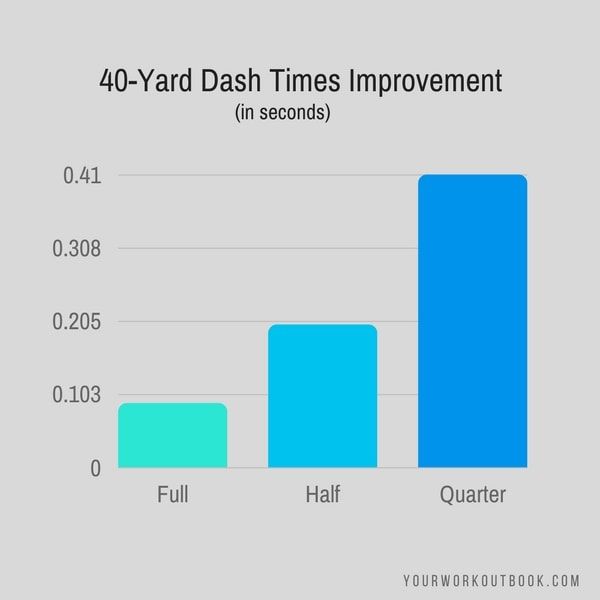
Want to improve your vertical jump and 40-yard dash? New research shows that when it comes to developing speed and power quarter squats is the way to go.
Ass to grass—that’s always been the directions given when an athlete or gym-goer walks over to the squat rack.
The theory has always been that deploying a full range of motion will better train an athlete, making them stronger and faster. A longer range of motion recruits more muscles, generating a higher response.
Research published in the journal Human Movement sought to find out what kind of squats benefited athletic performance, in particular, the 40-yard dash and vertical jump height.
The study took a group of college athletes, and over the course of a 16-week period had them perform a regular strength training routine, lifting four times per week.
During two of those sessions the athletes performed one of three variations of squat: quarter squat, half squat, and full squats.
Here’s the (surprising) results:


Crazy.
Additionally, training full squats did the best at improving full squat 1RM, and training the quarter squat produced the biggest gains in quarter squat strength, showing that if you want to improve a particular lift, it’s that exact lift you should be training.
In terms of improving vertical jump, this research flies in the face of previous studies, which found that doing full depth squats within our workout routine were more effective at improving vertical jump height than partial squats (Weiss et al, 2000).
In terms of raw sprinting speed, this is the first kind of research done to measure sprint speed as it related to depth of squat training.
There’s a few reasons quarter squats could be more effective at generating explosive power:
You can lift more. When it comes to loading the bar you will always be able to lift more when you have a smaller range of motion, especially when you don’t have to dip below parallel, which can be tough for athletes with less-than-awesome hip and ankle mobility. (Tip: Athletes who struggle to get meaningful depth when doing full-depth squats should incorporate squat blocks into their lifts.)
It’s a short, powerful movement. Because you don’t have to do a full range of motion you can focus all of your energy and strength on the shortened movement. Again, this means you can lift more, faster. Getting a lot of acceleration out of a full squat can be difficult, especially when struggling under a heavy load. Just as how jump squats are to be done with a smaller ROM for optimal speed, quarter squats appear to stick to the vital part of the movement for explosive purposes, the hip extension.
It’s more specific to the tested movements. When performing a vertical jump test we don’t go ass to grass. Nor do we bend our knees further than 45 degrees when sprinting through a 40-yard dash. Quarter squats mirror both of these movements more accurately than a full ROM squat.
More Stuff Like This:
- Unleash the Beast: A Lower Body Power and Strength Workout for Sprint Athletes. Lay on the power to your speed work with this strength training routine that hits the lower body.
- A Speed + Power Workout for Sprint Athletes. Like to go really, really fast? Of course you do. This two-part workout will test your outright speed, and then load it with some concentrated strength training.
- Go Ballistic: Why You Should Add Squat Jumps to Your Training. Jump squats are a versatile way to teach your body raw, unbridled acceleration and power.
- Squat Pyramid: How to Crank Up Your Squat. Not for beginners, this squat pyramid that powerlifter and strength coach Will Ruth will leave your legs quivering.